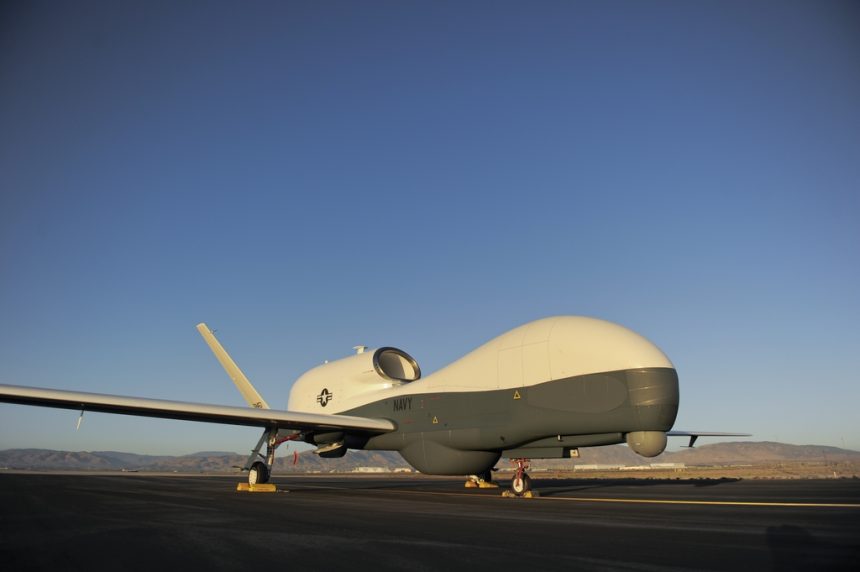On Jun. 14, the U.S. Navy’s MQ-4C Broad Area Maritime Surveillance (BAMS) unmanned aircraft system (UAS), was unveiled during a ceremony attended by about 300 people at Northrop Grumman’s Palmdale, California, manufacturing plant.
Now officially called the Triton, the MQ-4C, that is continuing testing and evaluation, parts assembly and installation, and radar risk-reduction tests, will complement the P-8A Poseidon within the Navy’s Maritime Patrol and Reconnaissance Force family of systems.
The MQ-4C is a much advanced version than the first generation Global Hawk Block 10: it is believed to be a sort of Block 20 and Block 30 Global Hawk hybrid, carrying Navy payload. With a 130.9-foot wingspan, the giant drone features an AN/ZPY-3 multi-function active-sensor (MFAS) radar system, that gives the Triton the ability to cover more than 2.7 million square miles in a single Intelligence Surveillance Reconnaissance (ISR) mission.
The unveiling ceremony came just three days after a BAMS demonstrator aircraft crashed during a test flight near Bloodworth Island in, Dorchester County, Maryland. Fortunately, there were no damages to people or property on the ground.
As part of what was initially the Global Hawk Maritime Demonstration program, beginning in 2006, before the Global Hawk platform was selected as the BAMS winner, the U.S. Navy purchased five RQ-4As from the U.S. Air Force: the drone crashed for unknown reasons on the U.S. East Coast on Jun. 11th is one of the two RQ-4A Block 10 that the USN has assigned to the VX-20 at Patuxent River for test purposes.
Although the test aircraft are referred to as BAMS demo drones, they are sensibly different from the actual MQ-4C BAMS Triton that, in spite of the same basic airframe, has a completely different radar and surveillance equipment.
Therefore, even if it might have been a bit embarrassing, especially since it arrived few months after the news that the U.S. Air Force (that has already employed the Global Hawk in Libya) has cancelled the Block 30 aircraft, the crash should not change the current plans of the U.S. Navy to procure 68 BAMS to perform persistent maritime ISR.
Joe Trevithick has contributed to this post.
Image credit: Northrop Grumman via U.S. Navy
Related Articles
- BAM(s)! The crash of a U.S. Navy Global Hawk in Maryland could be the end of the giant drone. (theaviationist.com)







